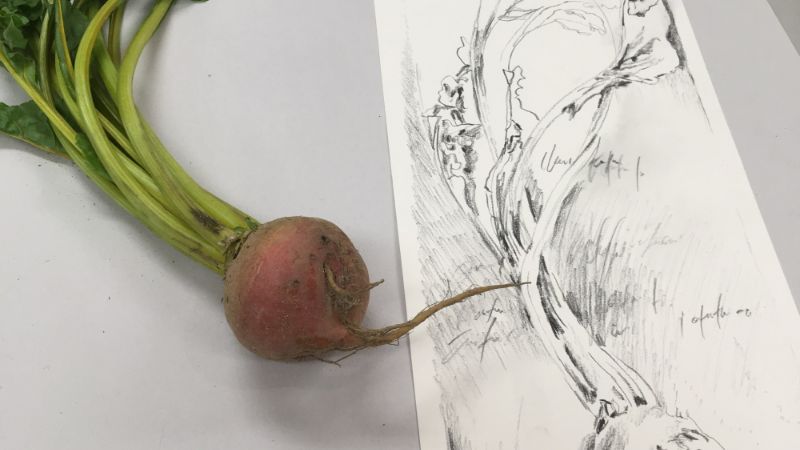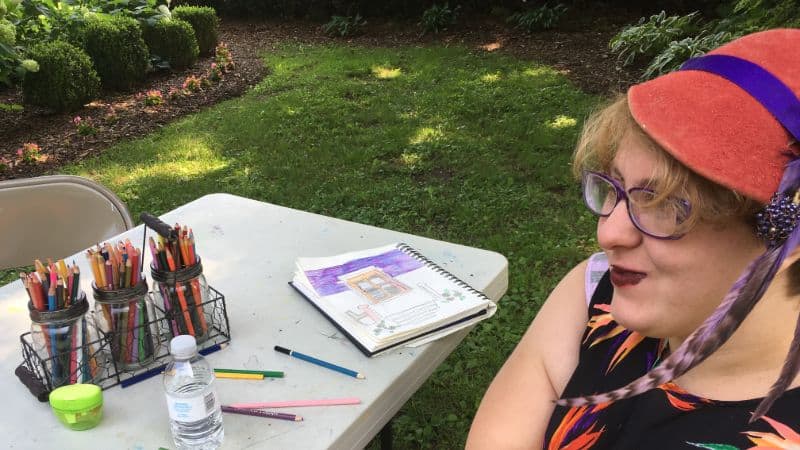
How to Develop a Daily Drawing Practice
Very few of us came out of the womb prolific geniuses like Michael Angelo (1475-1584), Albrecht Dürer (1471-1528), Andrew Wyeth (1919-2009), or Horst Janssen (1929 –1995), with a pencil in our hand. Nor will we make as many paintings in a lifetime as they did. But, anyone can improve their drawing skills. It is just a matter of practice.
Here are some suggestions that I have found helpful.
- Get in the Right Mindset. Having a dedicated space to work is important. I often light a candle, or drink something delicious at the beginning of my drawing session, just to remind myself that this practice time is important. I always try to clean up the space when I am done so that the next time I sit down to work I have an open invitation to begin anew. It takes me to a different mindset if I have to tidy up first.
- Keep Two Types of Sketchbooks. I actually have several. While that can be overwhelming to most people, I enjoy the variety of textures of paper. I also switch up media so I need different kinds of paper. It helps me get over the feeling of spoiling a good piece of paper to have more than one sketchbook. And on the other hand, you never quite know when something you think is just a mediocre beginning begs for more work and finishes big.
- Draw often, draw anything, draw in different ways. Draw from observation, from references, and from your imagination. Most people don’t know understand that you have to draw something from observation (real life) and references (photos) many times before you can draw it from your imagination with accuracy. Just like language you have to build up your vocabulary and practice it before you can form sentences, paragraphs, poems, and essays. Muscle memory is a miraculously helpful thing to have, even in the arts. But it takes many, many repetitions to build up.
Some of my favorite papers: (If you use my affiliate links below, I earn a very small commission from Amazon, it doesn’t cost you any more, and I use the proceeds for scholarships.)
- For watercolor, ink, acrylic and more: Arches cold press 130 pound paper in 9×12 pads
- For young students: Canson XL for water color, ink, charcoal, pastel 9×12 pads
- For oil pastels: Fabriano Studio Hot Press Watercolor Pad, 11 x 14, White
- For dry media drawing: Strathmore Medium Drawing Spiral Paper 9×12 Pad (cream colored)
- For markers, ink and things that might bleed through: Strathmore 300 Series Bristol Paper Pad, Smooth, Tape Bound, 11×14
- Of course, part of keeping your practice fresh will be trying out different sizes, weights, colors, textures, hand and machine-made papers. Sometimes the paper directs you in what and how you will approach a subject.
Most importantly,
If you’re always waiting for the “perfect” drawing before you put pen to paper, you’ll never use your sketchbook. Don’t wait. Keep two sketchbooks. Use one for your planned drawings—the ones that will be more polished and finished. Keep a second sketchbook for everything else—your doodles, notes, and experiments. The silly things. ~ A. Dunn
- Draw at a Convenient Size.
- Switch It Up.
- Keep It Simple.
- Have Multiple Drawings Going at the Same Time.
New research finds that the simple act of drawing boosts memory better than words do. We’ve known for a while that drawing exercises the brain in different ways from reading and writing. But did you know that drawing may actually make it easier for a brain to retain information?
So, pick up something that makes a mark, and begin (or continue your drawing practice. You’ll be glad you did! And if you want a little help along the way, I’d love to ART with you! You can view my current offerings.

Share
If you're new here, you may want to subscribe to my RSS feed. Thanks for visiting!

